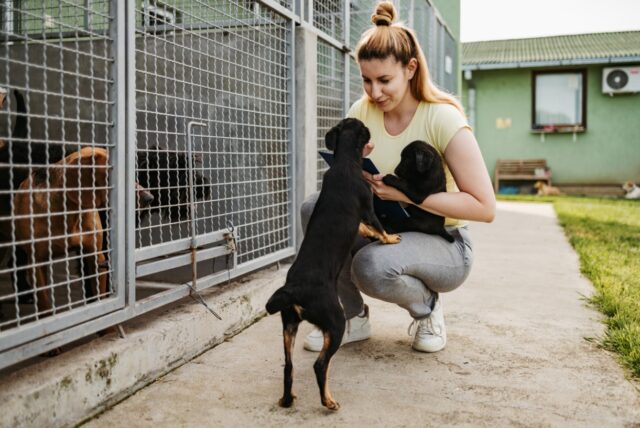
Animal shelters play an integral role in providing animals that have experienced neglect or mistreatment with a haven. These shelters give these vulnerable pets another chance at finding loving homes and families to care for them. Before being adopted, these pets often require rehabilitation services to overcome past traumas and become suitable companions. This article discusses various methods used by animal shelters to rehabilitate mistreated and neglected animals and how they provide support for adopters of these animals.
Understanding trauma and assessing needs
Identification of signs of mistreatment or neglect
Shelter staff must first identify signs of animal mistreatment or neglect, such as malnutrition, physical injuries, fearfulness, and aggressive behaviors in animals at risk. A full examination by a veterinarian is often necessary in order to assess the extent of trauma suffered and identify any medical concerns that may exist.
Assessing emotional and behavioral needs
Once physical conditions have been addressed, shelter staff must assess each animal’s emotional and behavioral needs. This assessment helps determine the most appropriate rehabilitation approach and identifies any required training or therapies.
Tailoring rehabilitation strategies
Building trust and confidence
Rehabilitating animals involves building trust between people and themselves; shelter staff works patiently with animals to gain their confidence through positive reinforcement and gentle handling techniques that promote security and comfort.
Behavior modification and training
Animals that are neglected or mistreated often display behavioral issues such as aggression or fearfulness. Shelters use behavioral modification techniques and training programs to assist these animals in overcoming these difficulties. Although this process may take time, its goal should always be the same: creating a well-adjusted companion who remains safe.
Socialization with other animals
Socialization is an essential element of rehabilitation as many mistreated or neglected animals have only had limited interaction with other animals. Shelters provide exposure to various social situations that gradually introduce them to other animals in a controlled and monitored environment.
Medical care and physical rehabilitation
Treating medical conditions
Mistreated and neglected animals often suffer from injuries, infections or dental issues that need medical treatment. Shelters provide these essential services and ensure each animal’s wellbeing and health.
Physical therapy and exercise
Animal shelters work closely with veterinarians and physical therapists to develop comprehensive plans that combine physical therapy, exercise regimens and therapy plans to help animals regain strength and mobility.
Foster care’s role in rehabilitative therapies
Affording nurturing environment
Foster care is integral to animal rehabilitation, providing them with a nurturing and stable environment to continue their recovery process. Foster families collaborate closely with shelter staff to implement rehabilitation strategies and ensure each animal receives consistent care and attention from staff members.
Assessing progress and modifying the plan
Foster care allows shelter staff to monitor animals’ progress closely and adjust rehabilitation plans as necessary, with foster families playing an essential role in successfully rehabilitating mistreated and neglected animals.
Assistance to adopters of rehabilitated animals
Pre-adoption counseling services
Shelters provide pre-adoption counseling to potential adopters to ensure they fully comprehend the unique requirements and challenges associated with adopting an animal that has been rehabilitated. This counseling helps inform decision-making while simultaneously providing preparation for what lies ahead in terms of the commitment required to adopt.
Post-adoption support
Shelters provide post-adoption support to their adopters after adoption, offering resources and guidance that help them meet the challenges associated with adopting a rehabilitated animal into their household. These resources could include training classes, behavioral consultations, or access to veterinary services.
Connecting with local resources and support groups
Adopters of rehabilitated animals may benefit from connecting with local resources and support groups, such as the Humane Society of New York. This organization advocates for animal welfare by offering services such as low-cost spay/neuter programs, vaccination clinics, behavioral training sessions, and connecting adopters with support groups who share similar experiences in adopting rehabilitated animals.
Ongoing communication and follow-up
As needed, shelters provide ongoing veterinary care or other services necessary for adopted animals’ well-being. Shelters typically maintain regular contact with adopters, offering assistance as needed and keeping abreast of the progress of rehabilitated animals in their new homes. This support ensures the animal continues to flourish in its new environment while adopters feel confident handling any challenges.
Sustainability and consolidation of the program
Shelters are increasingly searching for ways to reduce their costs and enhance efficiency in their rehabilitation programs, yet no single approach provides a perfect solution. These challenges also highlight some of the difficulties experienced by shelter staff nationwide; however, this doesn’t diminish their dedication to improving the lives of animals in need.
Conclusion
Rehabilitating mistreated and neglected animals is a complex, often trying process that demands dedication, patience, and collaboration between shelter staff, foster families and adopters. Animal shelters play a critical role in helping these rehabilitated animals overcome past traumas and find loving homes by providing rehabilitation strategies tailored to each animal’s needs. Adopters can confidently welcome these rehabilitated creatures into their lives with the care and companionship they deserve.










